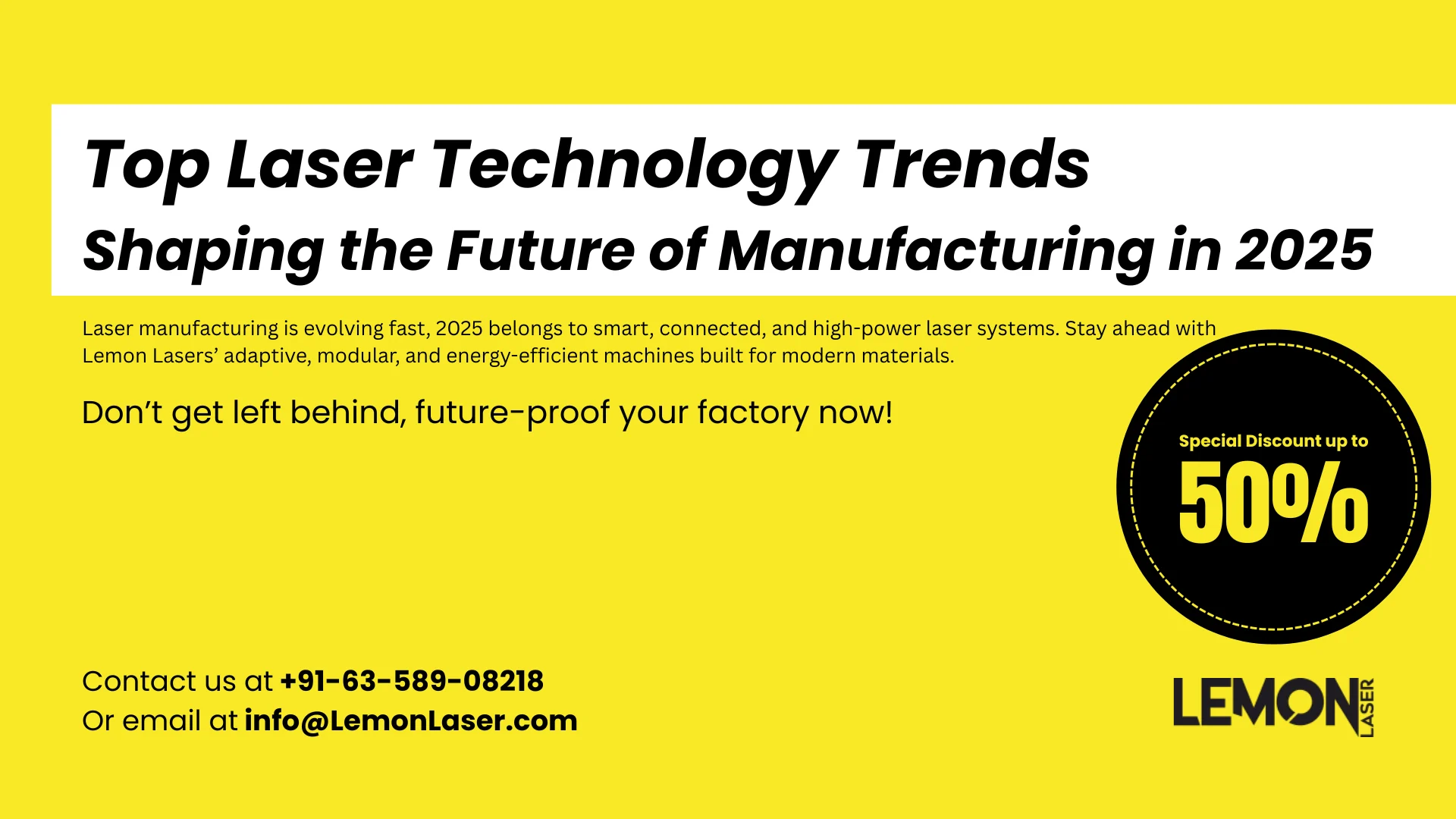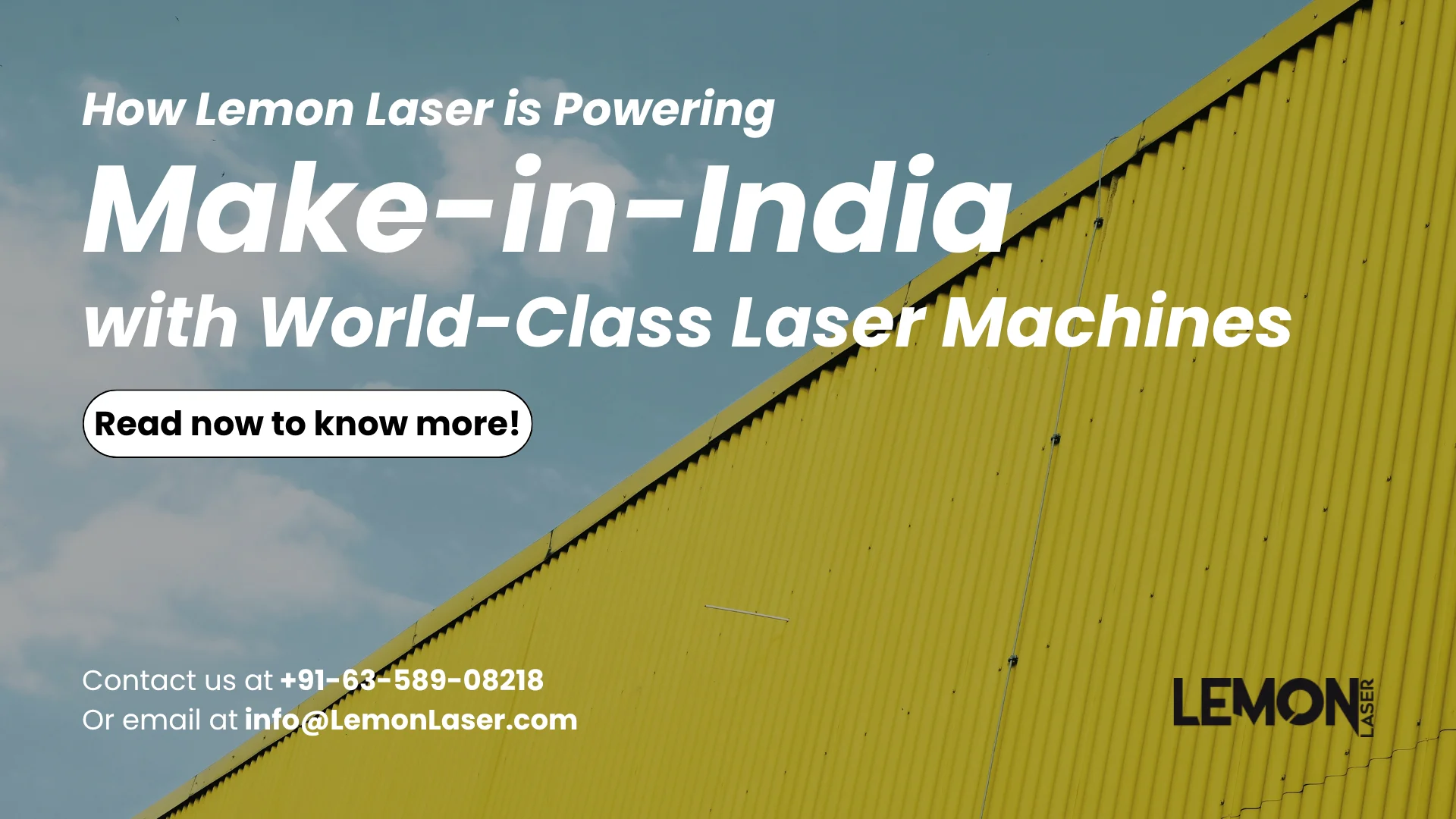Currently Empty: ₹0.00
Manufacturing in 2025 is being reshaped by smarter machines, higher-power lasers, and tighter integration between hardware and software. For fabricators, OEMs and design houses, staying competitive means adopting laser systems that aren’t just faster or more precise-they’re connected, adaptive and purpose-built for modern materials and workflows. In this post we break down the key laser technology trends driving productivity, lowering costs and opening new applications this year-and show how Lemon Lasers designs machines to meet these demands.
1. Smart, connected machines: AI, IoT and predictive workflows
One of the biggest shifts in 2025 is laser systems that don’t just execute G-code-they learn from it. Machine builders are embedding sensors, edge computing and AI-driven control loops that automatically tune cutting/welding parameters, detect quality drift, and recommend maintenance before components fail. These IoT and AI capabilities reduce scrap, shorten setup times and let operators focus on higher-value tasks rather than constant parameter tweaking. Real-world implementations report dramatic drops in downtime and material waste when predictive diagnostics and adaptive cutting algorithms are used.
Why Lemon Lasers invests here: our control stacks support sensor feedback for adaptive power/gas control and an optional cloud dashboard for production monitoring-so you get fewer surprises and more first-time-right parts.
2. Fiber lasers consolidate their lead (but CO₂ still has a place)
Fiber lasers continue to dominate metal fabrication thanks to higher electrical efficiency, lower running costs and superior performance on thin to medium metals. In 2025 fiber sources are the default for many metal cutting and marking tasks, while CO₂ systems remain important for non-metal materials like acrylic, wood and leather. The takeaway for buyers: match laser source to your material mix-a fiber system for metal shops, and CO₂ or hybrid solutions where non-metals are common.
Lemon Lasers approach: a modular platform that lets customers choose fiber or CO₂ heads and switch configurations as their product mix evolves.
3. Higher-power lasers & reflective metal cutting (copper, aluminium)
Manufacturers are pushing into higher wattage fiber lasers (and beam delivery improvements) that make cutting reflective metals-copper, brass, and some aluminium alloys-faster and more reliable. These advances expand laser use into electrical contacts, heat exchangers and EV battery components where copper is common. High-power systems also reduce secondary finishing by delivering cleaner edges and less dross on thicker sections.
Practical tip: ensure optics, nozzles and beam delivery are specified for reflective work; Lemon Lasers offers optimized heads and protective measures to minimize back-reflection risk.
4. Multi-process and hybrid systems: cutting, marking & welding in one cell
Demand for faster throughput and smaller footprints is driving hybrid machines that combine cutting, marking and welding in a single cell or with quick tool changes. For contract manufacturers and Tier-1 suppliers, hybrid cells lower handling time, reduce fixturing and accelerate time-to-market for assemblies that require multiple laser processes. Hybridization pairs well with robotic integration for complex 3D parts.
Lemon Lasers advantage: our hybrid cells are engineered with common motion systems and unified controls so customers can run sequential processes without reclamping.
5. Laser welding: robotic integration, quality monitoring & EV growth
Laser welding continues strong growth driven by automotive electrification, battery tab welding and precision assembly in aerospace and medical devices. In 2025 we see more robotic welding cells, inline weld-quality monitoring (optical and acoustic sensing) and software that flags defects automatically. These elements reduce rework and make lasers the preferred joining method for high-value parts. Market forecasts expect steady CAGR growth for laser welding in the coming years.
What we offer: robot-ready weld heads, integrated weld monitoring options and turnkey fixtures tailored to battery and automotive subassembly work.
6. Advanced marking: green, UV & ultrafast lasers for fine detail
Marking needs have moved beyond simple logos; today’s requirements include micro-marks, traceability codes on sensitive substrates, and marks on finished optics or medical implants. Green and UV lasers-and in niche cases ultrafast femtosecond lasers-produce high-contrast marks on difficult materials with minimal thermal damage. These technologies are particularly important for medical, electronics and luxury goods industries where mark permanence and minimal surface change are crucial.
Customer outcome: choose the marking wavelength and pulse regime that matches your substrate to avoid rework and ensure compliance with traceability standards.
7. Energy efficiency and sustainability as buying criteria
Sustainability is now a procurement filter for many OEMs. Laser systems that offer higher wall-plug efficiency, reduced gas consumption, and lower lifecycle emissions enjoy an edge in RFPs. Laser cutting’s minimal material waste and elimination of tooling (compared to stamping, for example) are also selling points. In short: greener lasers can be both cost-effective and brand-positive.
Lemon Lasers commitment: optimizing resonator efficiency, heat recovery options and guidance on process settings that minimize gas use and energy per part.
8. Consumables, serviceability and aftermarket readiness
As lasers become smarter, the importance of fast, genuine spare parts and consumables grows. Optics, nozzles, protection caps and filters directly affect cut quality; predictive maintenance reduces emergency orders but requires a ready spare-parts pipeline. Manufacturers are rewarding suppliers who provide rapid parts delivery, transparent lifecycles and easy self-service guides. For customers, planning an inventory of critical consumables reduces unplanned downtime.
How Lemon Lasers helps: standardized parts across families, clear consumable life recommendations and partner distributors to minimize lead times.
9. Software & digital workflows: nesting, CAM, and factory orchestration
Improvements in nesting algorithms, simulation tools and digital job tickets reduce material consumption and make small-batch production economical. Integration with MES/ERP systems gives planners visibility into order progress and helps schedule preventive maintenance around production needs. The result: higher asset utilization and better on-time delivery.
What to expect: Lemon Lasers supplies CAM bundles with optimized nesting and options for MES integration so data flows from order to finished part with fewer manual handoffs.
10. New applications: micro-fabrication, medical devices and advanced electronics
Laser technology’s precision and low heat-affected zone open doors to micro-fabrication-tiny components for medical devices, micro-turbines, and advanced electronics. As component designers push tolerances and complex geometries, lasers are often the enabling tool that lets new products move from prototype to production. Manufacturers that invest early in adaptable laser platforms can capture these high-value niches.
Conclusion: What this means for your factory
2025 is the year lasers get smarter, greener and more flexible. For manufacturers this means:
- Invest in connectivity and predictive features to reduce downtime;
- Choose the right laser source for your material mix (fiber for metals, CO₂ for non-metals, green/UV for fine marking);
- Plan consumables and service with trusted suppliers; and
- Evaluate hybrid cells where multi-process consolidation can cut lead time.
Lemon Lasers builds modular, serviceable and connected laser systems designed for these exact trends-from high-power fiber heads for copper to hybrid cells that combine cutting, marking and welding. If your factory is ready to reduce cycle times, improve yields and unlock new product lines, our engineering team can recommend the best configuration for your parts and production volumes.
Contact Us Now
Ready to future-proof your shop floor with a Lemon Lasers solution?
Prefer a personalized demo? Tell us your material, part drawings and batch size-we’ll show what a 2025-ready laser cell can do for you.




